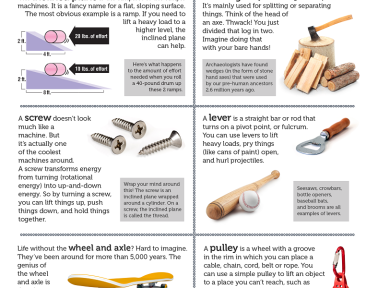In my ebook I discuss the importance of developing intrinsic motivation in our children. It’s widely accepted that children shouldn’t be bribed because it can reinforce power struggles and negative behaviors. But at the same time, positive reinforcement and celebrating accomplishments can also be powerful tools. This can sometimes be confusing for parents and teachers of young children. So I asked a few writers I know who are also mindful, intentional parents and professionals to weigh in on how they balance these concepts in their own personal and professional philosophies.
Each one offers a great perspective to the discussion. I’d love to have you add your perspective as well!
Joshua Becker
Expectation and Explanation
More than rewards or bribery, our parenting style has focused on expectation and explanation. We have always informed our children what behavior is expected of them and given them the courtesy of explaining clearly why that behavior is expected. Those clear expectations provide the opportunity for both praise (as often as possible) and discipline (when necessary). As a result, bribery is rarely used in our home.
– Joshua Becker writes at Becoming Minimalist, where he shares the joys and struggles of minimalist living. He’s also the author of two ebooks, Inside Out Simplicity and Simplify, both available at his blog.
Kimberley Clayton Blaine
How Rewards or Bribery Can Backfire
Ever wonder why after a few weeks of using a sticker chart, it stops working? Children sense that you’re trying to make them do something and they feel the external push. Children only want to accomplish things successfully when they feel motivated from within. This can turn into a problem because children will do things for the reward or praise and not for themselves. This can stop a child from being self-motivated and can make them be overly dependent on others. When children get used to receiving rewards for behaving, they become pleasers and seekers of outside validation. It can be addicting as well: children can become attention mongers, and thus lose passion for the things they truly love. Children will eventually feel like failures if they can’t get others to make them feel important.
When children are bribed with rewards just for being cooperative, they become experts in performing the ‘dog and pony’ show. They know what to do to get our approval or the treat. It’s easy to be superficially compliant because it doesn’t require much effort.
Studies show that children who expected rewards performed poorly in order to get them as compared to kids who did not expect a reward. And to top it off, children who are given rewards tend to do the least amount required. Most parents want their kids to try hard at any thing they do and to find real fulfillment from within – which clearly rewards do not do.
There is no ‘right’ or ‘wrong’ or any absolute answer here. We all know parenting can be quite daunting, so if we slip into rewarding or bribing, it’s not the end of the world. Have compassion for yourself, none of us are perfect parents. Ideally it’s preferable if you are aware of how your child responds best.
Children are born with an enormous desire to learn. They also have an innate capacity for honesty, empathy and considerateness. These qualities come forward as a result of our guidance, our role modeling, and our appreciation. Rewards and praise for “good behavior” or “good performance” simply get in the way. Don’t make it a habit or regular routine, every now and then it’s not going to hurt, but honor your child. You may be surprised!
–Kimberley Clayton Blaine, MA, MFT, is the executive producer of the online parenting show www.TheGoToMom.TV and author of several books including The Go-To Mom’s Parents’ Guide to Emotion Coaching Young Children and The Internet Mommy.
Deborah Stewart
Recognizing the Power Struggle
When it comes to a addressing a young child’s behavior or actions, there are often two agendas at stake …
The adult’s agenda is based on need:
• “I need you to line up”
• “I need you to listen to me”
• “I need you to put away your toys”
• “I need you to stay in bed”
The young child’s agenda is based on want:
• “I want to play longer”
• “I want to things my way”
• “I want to do it myself”
• “I want to have fun”
When the two agendas collide, there is a power struggle. A power struggle can simply be described as: “The adult needs the child to meet an expectation but the child wants to do something else.”
It is often during a power struggle that parents and teachers start making decisions about what to do. Sometimes, a sticker or a prize of some type is offered to get the child to meet the expectation – I call this a “shortcut.” The child responds positively to a shortcut because it is something he or she wants and the adult uses the shortcut because it gets the child to do something he or she needs.
Shortcuts are not bad in themselves but they are an immediate and short term solution. Shortcuts do not teach the child how to successfully meet adult expectations and they do not build a long-term desire or “want” to meet the expectations.
Teaching helps the child understand expectations and motivating helps the child want to do it. Both teaching and motivation begins before, during, and after the power struggle or that shortcut moment.
Here are a few examples….
1. You are ready for your students to clean up but the children will not clean up unless they are promised a sticker (shortcut).
Teaching – Take time to teach the children where things go and to talk with the children why it is important to help put away the toys. Talk with the children about ways they can help make cleanup time fun and successful.
Motivational – Build interest in putting away the toys by offering genuine praise as the children are cleaning. “You are such a big helper.” “I am so amazed at how you are organizing those toys.” “You remember what we talked about earlier – well done!”
2. You are in the grocery store and the child keeps running away or hiding. The child cries when he has to sit in the grocery cart until he or she is promised that if they are good they can have a toy.
Teaching – Before going in the store, talk about what the rules will be and what will happen if the child doesn’t follow them. Talk about why those rules are important. Talk about how you want the child to be safe and how you want to enjoy going to the store together. Ask the child to tell you what he or she can do to make the trip inside the store fun for both of you.
Motivational – While in the store, make the experience interesting. Let the child push the cart or help put the items you need in the cart. Play a game like “I spy a gallon of milk! – Can you help me find the milk?” Offer genuine praise to the child for helping you get the milk or for pushing the cart gently. Then as you leave the store, tell the child how much fun you had just spending time together.
These are just two examples of how to take a power struggle and begin the process of changing it from a “shortcut moment” to a long-term change in behavior. Teaching and motivating are not immediate like shortcuts are. They require a long-term investment by the adult but the long-term investment and the long-term results are always worthwhile.
Recommended listening: 3 Reasons Why Managing Classrooms with Punishments and Rewards is Wrong from BAM Radio.
– Deborah Stewart, M.ED, writes at Teach Preschool, a blog devoted to promoting excellence in early childhood education.
A huge thank you to my guests Joshua, Kimberley, and Deborah for participating in this panel discussion!
Please add to this discussion with your comments as well. How you do you balance the concepts of intrinsic motivation and positive reinforcement?
<!–
–>










